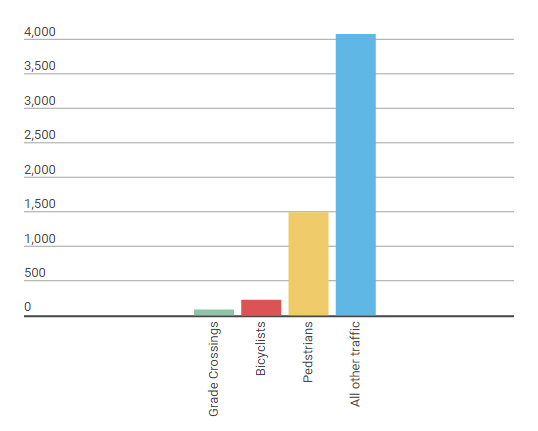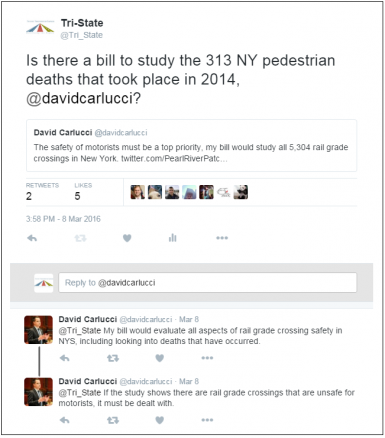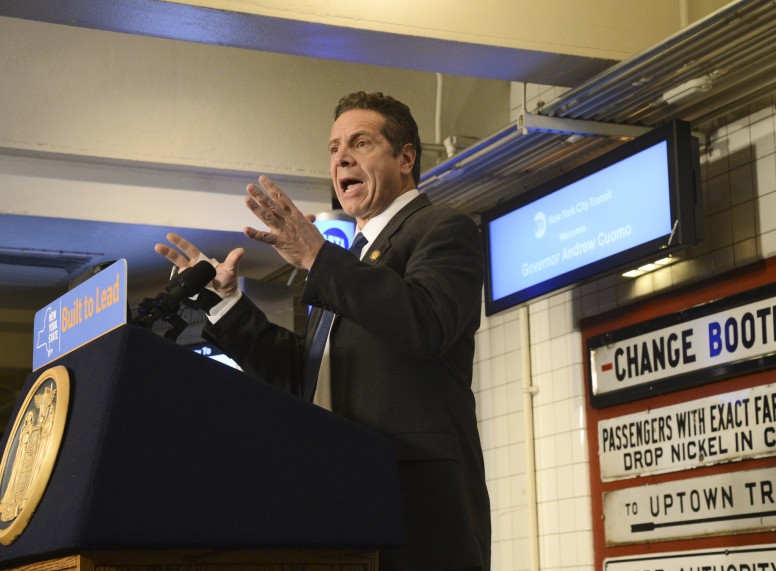Earlier this month, Governor Cuomo re-affirmed his commitment to a long sought-after project for Long Island Rail Road commuters: extending the Main Line’s third track by 9.8 miles from Floral Park to Hicksville.
But this newly-dubbed “Right Track” plan risks misallocating resources. During the same announcement, Governor Cuomo also proposed eliminating railroad grade crossings:
The third track also brings with it an opportunity to redo the grade crossings that are in that affected area. Grade crossings. If this nation was really thinking ahead, we would have addressed grade crossings nationwide years ago. They are just accidents waiting to happen. We have 5,000 grade crossings in the state of New York. About 300 on Long Island. Just by definition, they are dangerous and every once and a while there is a terrible accident and we are spurred into activity and people say, “Oh, look at this terrible accident; we have to do something.”
[…]
So there are seven grade crossings that can actually be fixed as part of this project. We are doing the third track – we’ll fix the grade crossings. We will fix them in concert with the community. We brought in the local mayors; I said, “Tell us how you want to do it. It is not really rocket science. You can go under the track, you can go over the track. Tell us how you want to do it.”
Governor Cuomo isn’t the only one who thinks grade crossings are dangerous: Assemblyman Tom Abinanti of Westchester County and Senator David Carlucci of Rockland County have sponsored bills in the Assembly and Senate to study the state’s 5,304 grade crossings.
Leaving aside the obvious questions of how costly or disruptive a bridge over or tunnel under a railroad track would be to the local streetscape, a very initial inquiry would be to ask two questions:
- Are the incidents of injury and death high enough to warrant such a strong push to change the crossings?
- Could the money be better spent on other more dangerous areas?
Comparing Incidents of Fatalities
The graph below compares statewide deaths at grade crossings with pedestrian deaths, bicyclist deaths and other traffic deaths for the five-year period between 2010 and 2014:

During this five-year period, fatality rates among bicyclists, pedestrians and motor vehicle occupants were significantly higher than those at grade crossings:
- Riding a bicycle in New York was 10 times as deadly as crossing a railroad track at grade,
- Being a pedestrian in New York was 68 times as deadly as crossing a railroad track at grade
- And being in a motor vehicle was 185 times as deadly as crossing a railroad track at grade.

And these five years are not anomalous. There were 84 total deaths at railroad crossings in all of New York in the 15-year period from 2001 to 2014. To put that number in perspective, 88 pedestrians were killed in Nassau County in a three-year period.
Senator Carlucci has said that “when the money is there we have to spend it efficiently, we have to spend it effectively.” Given the data, a more effective use of state funds is to apply resources to high-risk trouble spots in our transportation network.
Spending Efficiently and Effectively
New York State would be much better off prioritizing transportation investment based on three criteria:
- How many people will it serve/benefit?
- What is the best bang for the buck?
- How does the project advance mobility goals of existing and future projects?
For LIRR, such criteria would likely reveal that capital investments that provide more reliable, frequent transit service or that reduce pedestrian fatalities on Long Island’s infamously deadly Jericho and Hempstead Turnpikes are better investments than changing grade infrastructure.
TSTC Staff Analyst Ryan Hall contributed to this post.


[…] Budget Includes $20M for Complete Streets, Nada From Senate or Cuomo […]
While there is a grade crossing on the Yamanote Loop in Tokyo, I doubt the gates go up to let traffic through in the rush hours when there is a train every two minutes. Given the intent to have more trains and reverse peak trains, grade crossings could be closed for much of the peak period on the line.